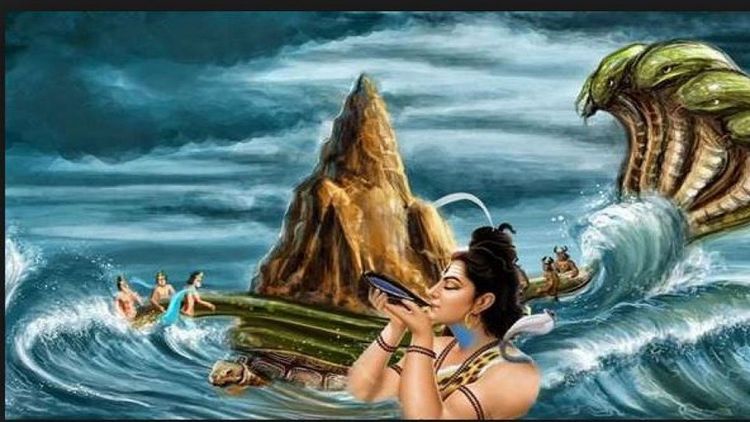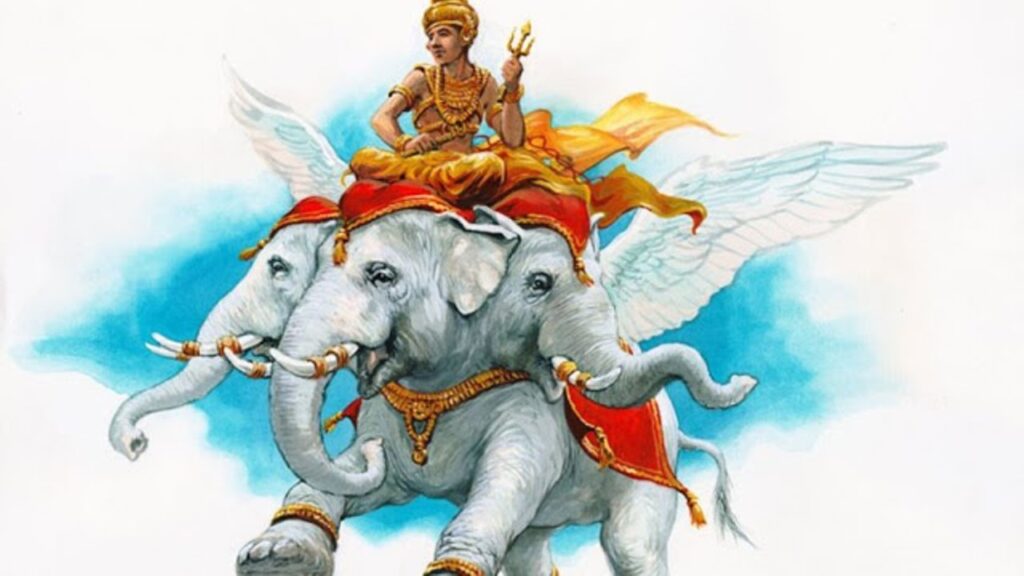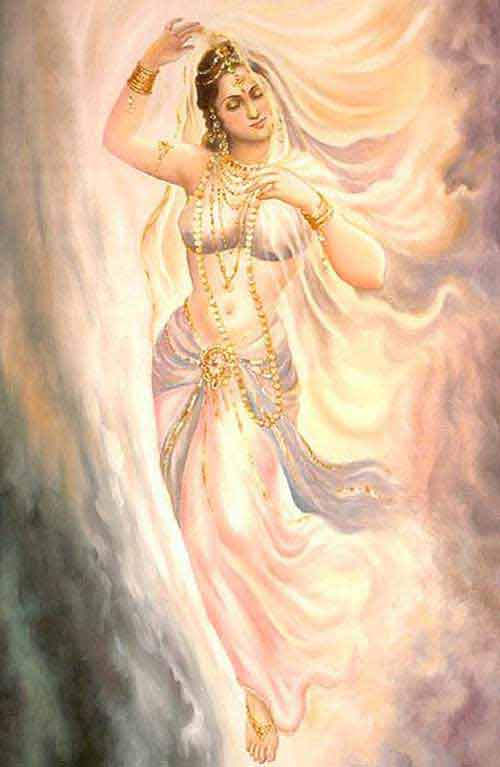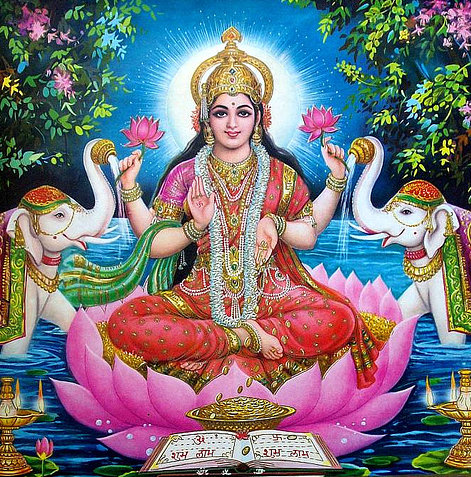Fourteen gems obtained from Samudra Manthan

Almost all people belonging to the Hindu religion know the story of the churning of the ocean that is Samudra Manthan. This story is related to the cup of nectar that came out of the Samudra, for drinking which a dispute arose between the gods and the asuras. After which Lord Vishnu took the form of a woman named Mohini and made the gods drink Amrit. But do you know that during the Samudra Manthan, 13 other things also appeared apart from Amrit? In this article, we are giving details of the story of Samudra Manthan and the 14 Ratna that came out of it.

According to religious scriptures, once due to the curse of Maharishi Durvasa, heaven had become devoid of glory (riches, wealth, splendor, etc.) and all the deities including Indra had become powerless. He old the way to churn the ocean together with the Asuras and also told that by churning the ocean you will get nectar, drinking which you all will become immortal.
When the deities told this to Bali, the king of the Asuras, he too got ready to churn the ocean in the greed of attaining immortality. After this, Vasuki Nag’s tail and with the help of Mandarachal Mountain and Vishnu’s Kurma avatar, the churning of the ocean started. As a result of which 14 gems came out from the sea one by one, whose details are as follows –
1. Halahal Vish
First of all, Halahal poison emerged from the churning of the Samudra, whose flame was very intense. All the gods and demons started burning with the flame of Halahal poison and their luster started to fade. On this everyone together prayed to Lord Shankar. At the request of the deities and the asuras, Lord Shiva kept the poison on his palm and drank it, but Goddess Parvati did not allow the poison to go down his throat. Hence Shiva’s throat turned blue due to the effect of Halahal poison. That’s why Mahadev is also called “Neelkanth”.

2. Kamdhenu
Kamadhenu the cow came out of the churning of the Samudra after Halahal poison. That’s why the Brahmavadi sages accepted it. The description of Kamdhenu is found in mythological stories as a miraculous cow, which had divine powers and the mere sight of which used to remove the sorrows and pains of the people. The one who had this Kamdhenu used to get miraculous benefits in every way. The milk of this cow was considered like nectar. As Lord Vishnu is the best among the deities, the ocean among the lakes, the Ganges among the rivers, the Himalayas among the mountains, Narad among the devotees, Kailash among all the Puris, Kedar Kshetra among all the regions, so Kamdhenu is the best among all the cows.

3. Uchchaishrava
During the churning of the ocean, Uchchaishrava’s horse emerged at number three. According to mythological religious texts and Hindu beliefs, it was given to Devraj Indra. Uchchaishrava has many meanings, such as one whose fame is high, whose ears are high, or who listens high. The color of this horse was white. Uchchaishrava is nourished by nectar and is called the king of horses.

4. Airavat
During the churning of the ocean, Airavat the elephant emerged at number four. Airavat is the name of the elephant of Indra, the king of the gods. Airavat was given to Indra at the time of distribution of the gems obtained from the churning of the ocean. He has been described as Shuklavarna and has four teeth. At the time of the distribution of gems, Indra had taken this divinely gifted elephant for his ride. That’s why it is also called “Indrahasti” or “Indrakunjar”.

5. Kaustubh Mani
Kaustubh Mani appeared at number five during the churning of the ocean, which Lord Vishnu wore on his heart. It was very shiny and it is believed that wherever this gem is, there is no divine calamity.

6. Kalpavriksha
Kalpavriksha appeared on the sixth number during the churning of the ocean. According to Hindu mythological beliefs, this tree was the tree that fulfilled all desires. It was established in heaven by the gods.

7. Apsara Rambha
At number seven during the churning of the ocean, an Apsara named “Rambha” appeared. She was dressed in beautiful clothes and ornaments and her gait was captivating. She went to the deities. Later the deities handed over Rambha to Indra who was their became the main dancer of the gathering.

8. Goddess Lakshmi
Goddess Lakshmi appeared at number eight during the churning of the ocean. When Goddess Lakshmi appeared from the ocean of milk, she was seated on a seat of a white lotus in bloom. Divine light was emanating from her limbs and she had a lotus in her hand. Seeing Goddess Lakshmi, the Asuras Gods, sages, etc. all wanted Lakshmi to meet them, but Lakshmi herself choose Lord Vishnu.

9. Varuni
Varuni appeared at number nine during the churning of the ocean. It was taken by the Daityas with the permission of Lord Vishnu. Varuni means “wine” and that is why the Daityas were always immersed in wine.

10. Chandrama
During the churning of the ocean, the “moon” appeared on the tenth number, which Lord Shiva put on his head.

11. Parijat Tree
The “Parijat tree” appeared on the eleventh number from the churning of the ocean. The specialty of this tree was that just by touching it tiredness was removed. This tree also went to the part of the gods.

12. Panchajanya shankha
The “Panchjanya conch” appeared at the twelfth number during the churning of the ocean. It was kept by Lord Vishnu. This conch is considered a “symbol of victory”, and its sound is also considered very auspicious. According to the Vishnu Purana, Mata Lakshmi is the daughter of Samudraraj and Shankha is her half-brother. Therefore, it is also believed that where there is a conch, Lakshmi resides there. It is for these reasons that the conch shell is blown by Hindus during worship.

13. Lord Dhanvantari
During the churning of the ocean, Lord Dhanvantari appeared at the end with a golden urn full of nectar in his hand. After the distribution of nectar, Lord Dhanvantari accepted the post of Vaidya of the Gods at the request of Devraj Indra and Amravati became his abode. Later, when human beings on earth became extremely afflicted with diseases, Indra prayed to Dhanvantari to incarnate on earth. Accepting Indra’s request, Lord Dhanvantari incarnated on earth as King Divodas of Kashi. “Dhanvantari” composed by him Samhita is the basic text of Ayurveda. Sushrut Muni, the Acharya of Ayurveda, had received the teachings of this scripture from Dhanvantari ji.

14. Amrit
The fourteenth and the last gem that appeared during the Samudra Manthan was “Amrit”. The literal meaning of Amrit is ‘immortality’. In Indian texts, it is used in the sense of a chemical that gives immortality. The word first appears in the Rigveda where it is one of the various synonyms of Soma. Seeing the nectar, the demons started fighting with each other. Then Lord Vishnu assumed the form of Mohini and tricked the deities into drinking the nectar.
